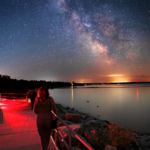It’s been a very long time since I’ve produced a new photo from my beloved William Optics GT81. I love that telescope… but for those following me, you know I’ve been having a bit of a creative block for the last few months and I have not brought it out much since last November. Maybe the ups and downs are typical? After all I’ve seen many other Astrophotographers going through similar struggles. I’m not sure…. I recently tried something new to me though, Milky Way Astrophotography. I had the chance to visit Northern Michigan on my yearly trip back to Michigan. There’s a Dark Sky Park near the Mackinac Island. For those who don’t know the area, this is an Island where they do not allow cars, since 1898… and it feels like the Island got stuck in 1898 ever since. In any case, while we hiked and biked and ate Fudge during the day… and at nights we visited the Headlands Dark Sky park.
The first night I used my Sky Watcher Star Adventurer 2i, which I have had for so long and have not used much at all. But this trip gave me the perfect reason to use it… it’s really portable and I needed something I could take with me on the plane.
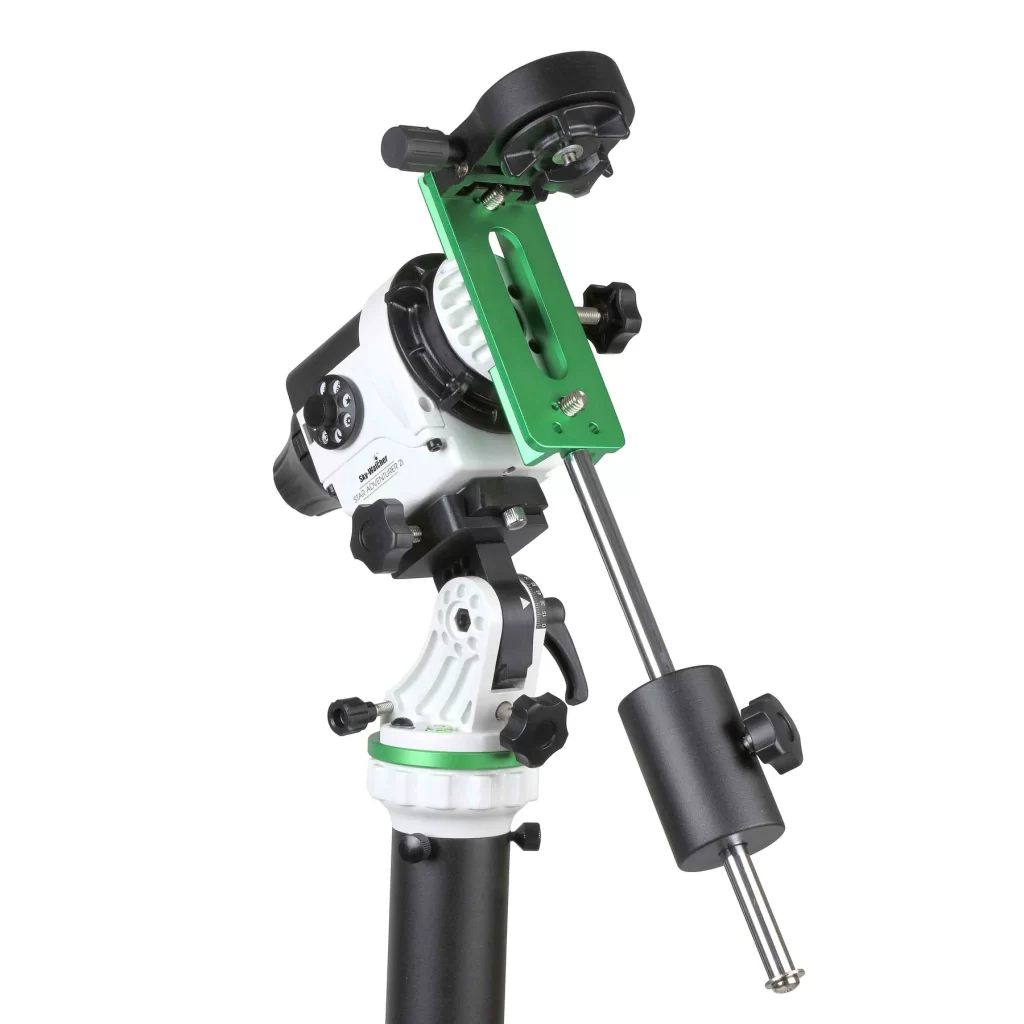
The Star Adventurer was a gem to use. I have the pro version, which comes with the counterweight. I paired that with a Canon EOS R and a Rokinon 20mm Lens and a Manfrotto 055 Aluminum Tripod. It was a great combination, especially with that Rokinon lens which had ED glass and is absolutely amazing for Astrophotography.
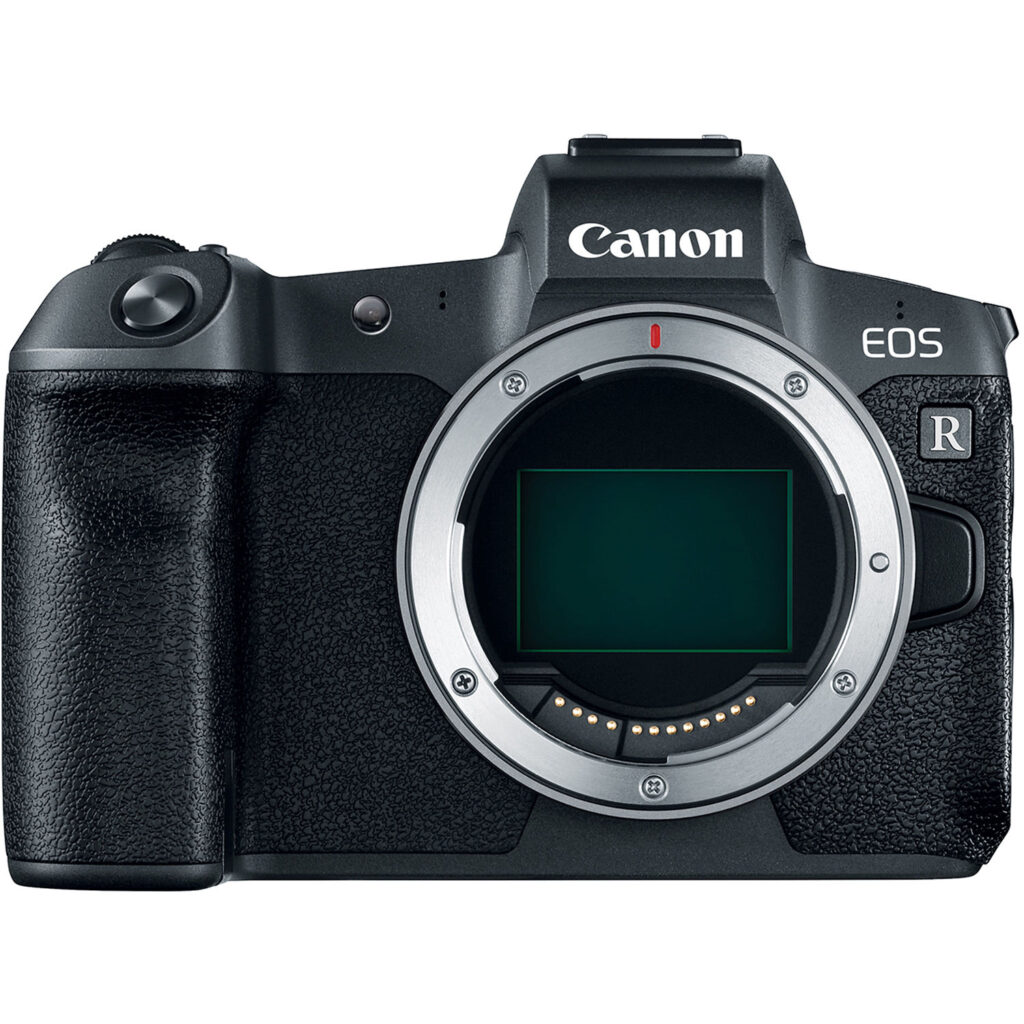
The last piece of equipment that I had that I think is an absolute must if you’re planning to shoot the Milky Way is to get yourself a Battery Grip. I used the Neewer Vertical Battery Grip which was very inexpensive compared to the Canon one.
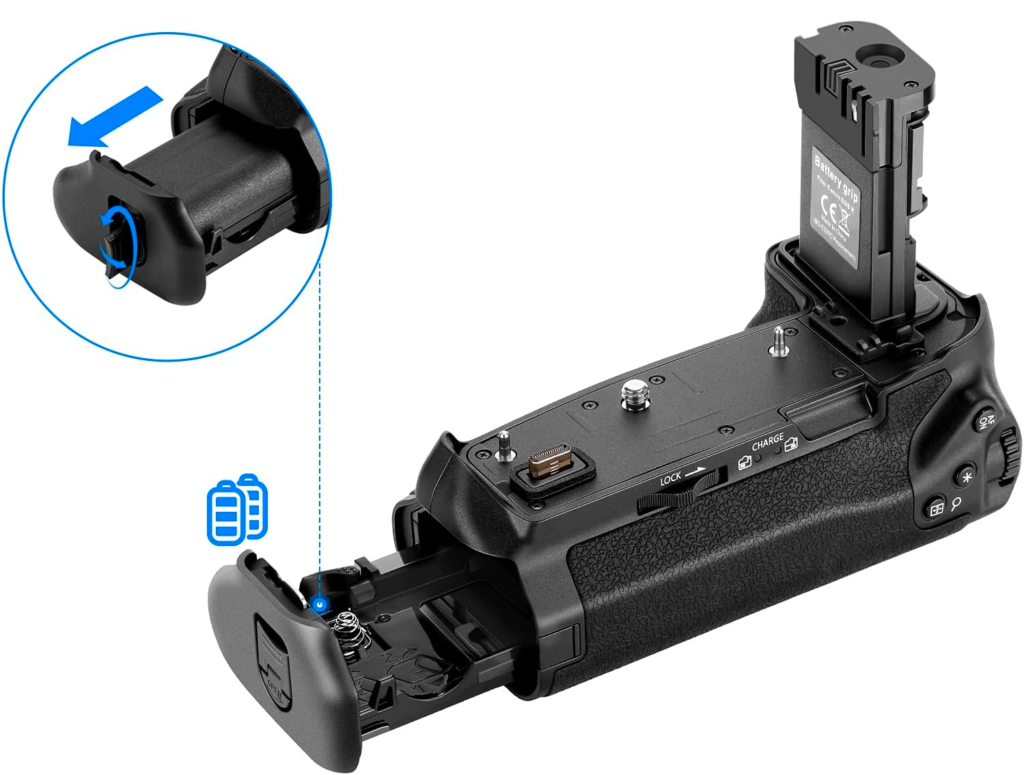
So why am I mentioning this particular piece of equipment? Well if you shooting the Milky Way this allows you to put two batteries in so you have extra long battery life. In fact I had 2 separate imaging sessions and without having to charge it worked all night. The second thing is that you can open up the battery compartment and swap batteries without having to take your camera off the mount, which is so handy when you’re out in the field. And the final thing, and I would say most important… it comes with a really handy wireless intervalometer. This meant that I did not have to mess with the wires of my regular one and have to worry about messing up the image because of me making a mistake. It also meant I didn’t have to sit right by it which was great and for the ~$65 I spent on it, it was well worth the money.
Ok ok…. get to the photograph’s Moe…
The first image I took was of the Milky Way over lake Michigan, this was tracked. I had trouble at first getting everything polar aligned because I was using a polar scope (haven’t had to do that for a long time), but then I realized since I’m taking at 20mm you really barely need to be polar aligned. So I pointed towards polaris and away I went. This was 20 images stacked, but as you can imagine the Milky way is moving so once it’s been stacked, you have to “unstack” the part of the image that should not be moving, namely the lake and everything below the horizon. The Milky way came out great in this image, everything was super sharp and I love just the brightness of the milky way over lake Michigan.
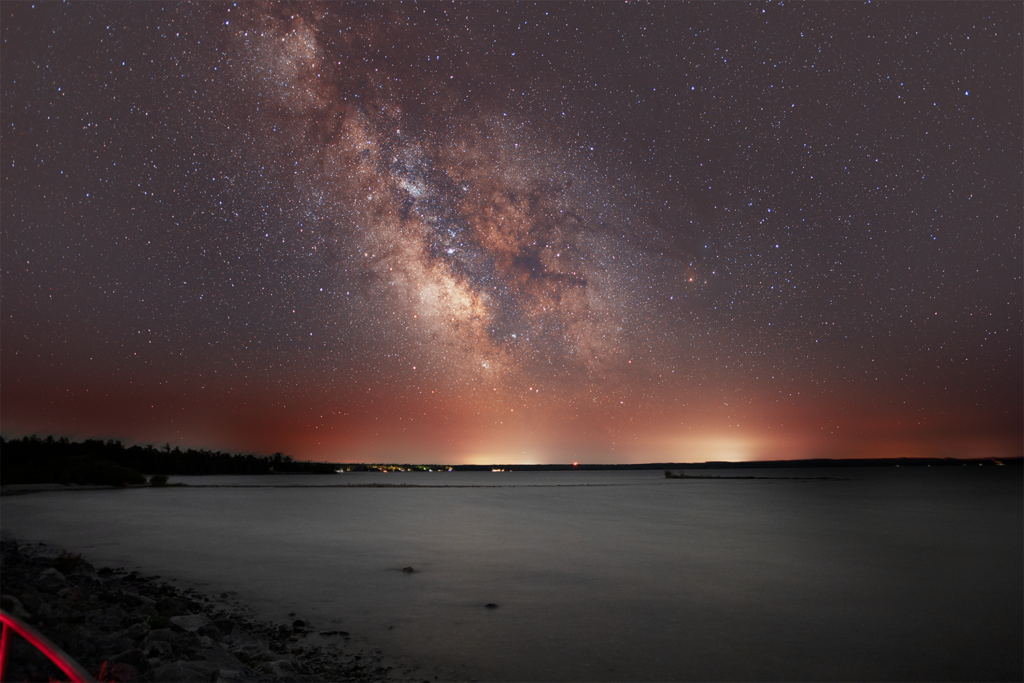
On our last day we visited the park again since we had some time. This time I did not bring the tracker, and instead decided to shoot untracked. I needed to find a subject however, so I looked and I found a nice treeline that had the Milky Way right over it. So I took around 20 images of the tree line and stacked them. This image was a little more post-processed. I tried to bring out the red in the Milky way core since my camera is stock and unmodified I wanted to get it to look a bit more natural. One difficulty after stacking it was difficult to restore the trees but eventually I was able to blend things together. In the end this provided a very interesting picture.
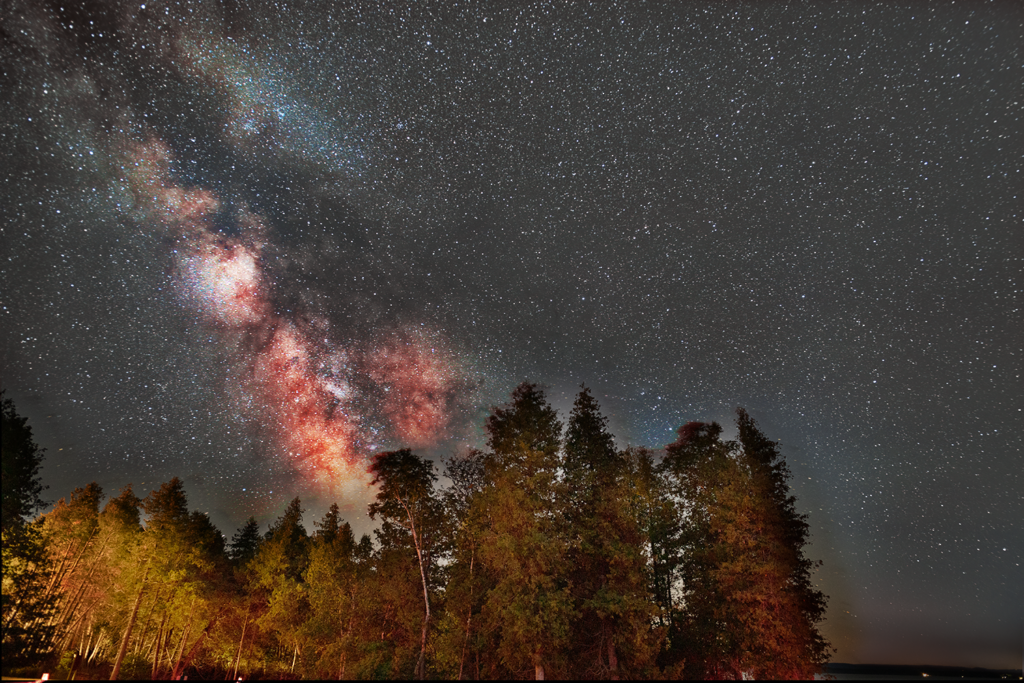
The final image was just a single frame, which is quite amazing to be honest. I bumped the ISO to 3200 and took a single 20 second exposure of my wife looking at the Milky way. At the Headlands you’re able to see it with the naked eye. The image came out so interesting, there is a lot going on… the tree line, the red light in the distance, the path glowing red from the lights they have at the center, and my lovely wife looking at the Milky Way. This has to be one of my all time favorite images and captures the moment perfectly.
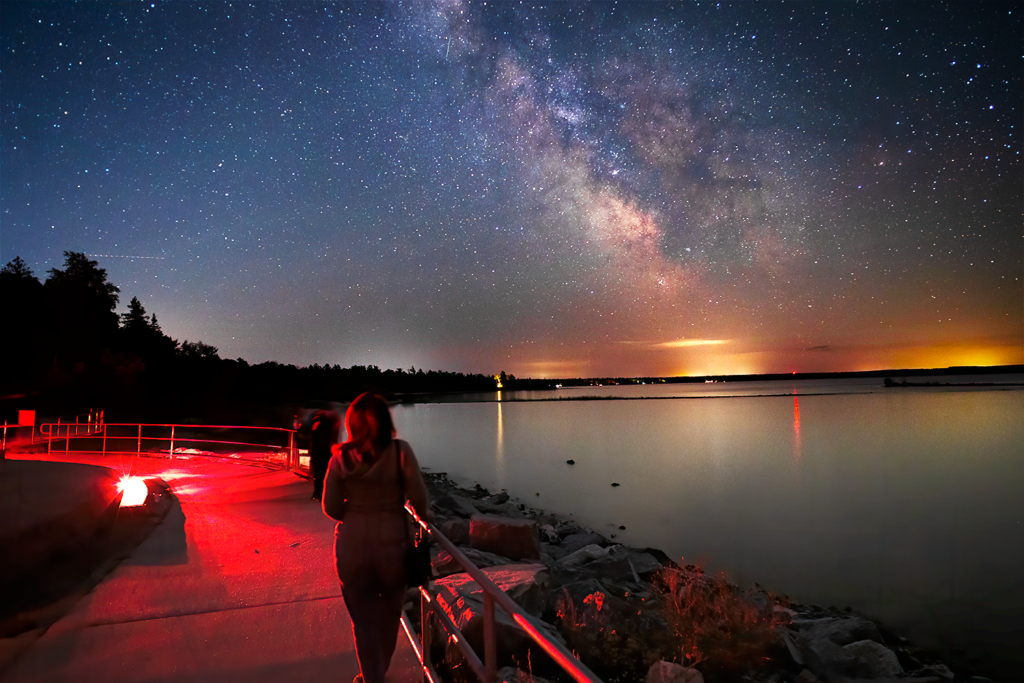
I would like to take a similar image but tracked and stacked, however I think this is proof positive that you don’t need a whole lot to be able to image the Milky Way. So definitely get out there and take some photos!
Having the opportunity to shoot the Milky Way has really brought the love of Astrophotography back for me. It’s been a long time since I have been able to produce new images, and this just kick started things again for me. I hope to do a lot more Milky Way Astrophotography in the future but these are my first shots!
Let me know how you like them!

